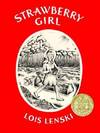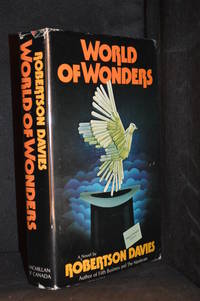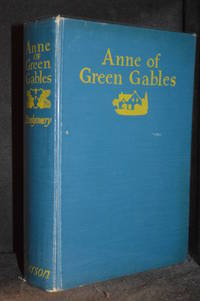
Canadensium plantarum, Historia. Cui adiectum est ad calcem enchiridion botanicum parisiense…
by CORNUT, Jacques-Philippe
- Used
- Hardcover
- first
- Condition
- See description
- Seller
-
Paris, France
Payment Methods Accepted
About This Item
4to [226 x 165 mm] of (8) ll. 238 pp. including 68 full-page plates, (1) l. of privilege, lower white margin of the title restored not affecting the text. Full shipskin, spines ribbed and decorated, red morocco lettering-piece, red edges. 18th century binding.
First edition of the first book on the flora of Canada, one of the earliest herbaria in north America.
Its importance was recognized by Linnaeus, who still consulted it for his classification work some hundred years after its publication.
Hunt, R.M.M. Botanical books, 227. Hunt 227; Nissen, BBI 406; Pritzel 1894; Stafleu & Cowan 1233.
Imbued with the renaissance herbalist tradition, Canadensium Plantarum Historia is already distinguished by its modern classification: The book contains the very first descriptions of 78 plants of the Canadian flora by the Parisian botanist and physician Jacques-Philippe Cornut (1606-1651).
Cornut was a French botanist and physician who never visited North America, but instead received the majority of his plant specimens from the Robins family, who supervised the gardens of Henry IV and the garden of the Paris Faculty of Medicine, and the Morin family, who owned several Parisian commercial nurseries.
This book is emblematic of the tradition of medicinal herbology, visible through the engraved representations of the roots, and is also characteristic of the seventeenth-century infatuation with botany, which can be seen in the author's horticultural observations.
The superb illustration consists of 68 full-page copper engravings.
Finally executed, they are attributed to Pierre Vallet(1575-1657) who became the very first botanical painter of the Court under the patronage of Marie de Medici, a sign of the choice place that this discipline acquired. Plants were then studied more from a descriptive point of view, leading to the characterisation of species, as shown by the construction of the Jardin du Roy, which lasted from 1626 to 1636.
The role of these gardens is central to the genesis of the book itself: as Cornut had never been to Canada, the specimens of the plants he describes were supplied to him by the botanists Jean Robin (1550-1620) and Vespasien Robin (1579-1662), who were in charge of the gardens of Henri IV and the Faculté de Médecine, the forerunners of the Jardin des Plantes. The plants themselves were brought back by the French explorers, a significant aspect of the opening up of the New World and the link between the continents. Canadensium Plantarum Historia follows this trend, with the description of plants from Canada, a distant land, being coupled with an unpublished list of the flora around Paris (Enchiridium botanicum parisiense).
More than 30 plants from eastern America are described and illustrated here for the first time, as well as 5 bulbous plants from south Africa.
The 68 large copper engravings in the text describe the specimens brought back to Paris by Samuel Champlain, then cultivated by Robins, director of the gardens of Henri IV and of the École de médecine.
Carl Von Linnaeus (1707-1778) would emphasise the major influence of Cornut's work on his own observations of the Canadian and north American florain his textbookPhilosophica Botanica.
Published five years before the first book printed on American soil, Canadensium Plantarum Historia represents the passage from the Renaissance to the modern time marked by the meeting between the old continent and the New France.
A precious copy of one of the earliest herbaria of North america, preserved in its 18th century binding.
FR
Paris, Simon le Moyne, 1635.
In-4 de (8) ff., 238 pp. y compris 68 planches à pleine page, (1) f. de privilège, marge blanche inf. du titre restaurée sans atteinte au texte. Pleine basane, dos à nerfs orné, pièce de titre de maroquin rouge, tranches rouges. Reliure du XVIIIe siècle.
226 x 165 mm.
Édition originale du premier livre sur la flore du Canada, l'un des tout premiers herbiers d'Amérique du Nord.
Son importance fut reconnue par Linné qui, pour son travail de classification, le consultait encore quelque cent ans après sa parution.
Hunt, R.M.M. Botanical books, 227. Hunt 227; Nissen, BBI 406; Pritzel 1894; Stafleu & Cowan 1233.
Empreint de la tradition herboriste renaissante, Canadensium Plantarum Historia se distingue déjà par sa classification moderne : l'ouvrage contient les toutes premières descriptions de 78 plantes de la flore canadienne par le botaniste et médecin parisien Jacques-Philippe Cornut (1606-1651).
Cornut was a French botanist and physician who never visited North America, but instead received the majority of his plant specimens from the Robins family, who supervised the gardens of Henry IV and the garden of the Paris Faculty of Medicine, and the Morin family, who owned several Parisian commercial nurseries.
Ce livre emblématique de la tradition de l'herbologie médicinale, visible à travers les représentations gravées des racines, est également caractéristique de l'engouement du dix-septième siècle pour la botanique qui transparaît dans les observations horticultrices de l'auteur.
L'illustration superbe se compose de 68 gravures sur cuivre à pleine page.
Finement exécutées, elles sont attribuées à Pierre Vallet (1575-1657) qui devint par ailleurs le tout premier peintre botanique de la Cour sous le patronage de Marie de Médicis, signe de la place de choix que cette discipline acquiert. Les plantes sont alors davantage étudiées sous l'angle descriptif pour aboutir à la caractérisation des espèces, comme en témoigne la construction du Jardin du Roy qui s'étend de 1626 à 1636.
Le rôle de ces jardins est central dans la genèse du livre même : Cornut ne s'étant jamais rendu au Canada, les spécimens des plantes qu'il décrit lui sont fournis notamment par les botanistes Jean Robin (1550-1620) et Vespasien Robin (1579-1662), qui ont la charge des jardins d'Henri IV et de la Faculté de Médecine, ancêtres du Jardin des Plantes. Les plantes sont elles-mêmes rapportées par les explorateurs français, aspect significatif de l'ouverture sur le Nouveau Monde et du lien entre les continents. Canadensium Plantarum Historia suit ce mouvement, la description des plantes du Canada, contrée lointaine, étant doublée d'une liste inédite de la flore des alentours de Paris (Enchiridium botanicum parisiense).
Plus de 30 plantes de l'est américain sont ici décrites et illustrées pour la première fois, ainsi que 5 plantes à bulbes d'Afrique du Sud.
Les 68 grandes gravures sur cuivre dans le texte décrivent les spécimens rapportés à Paris par Samuel Champlain, puis cultivés par Robins, directeur des jardins d'Henri IV et de l'École de médecine.
Carl von Linné (1707-1778) soulignera l'influence majeure de l'œuvre de Cornut pour ses propres observations de la flore canadienne et nord-américaine dans son manuel Philosophica Botanica
Publié cinq ans avant l'impression du premier livre imprimé sur le sol américain, Canadensium Plantarum Historia est représentatif du passage de la Renaissance à l'époque moderne marqué par la rencontre entre le Vieux Continent et la Nouvelle-France.
Précieux exemplaire de l'un des tout premiers herbiers d'Amérique du Nord, conservé dans sa reliure du XVIIIe siècle.
Reviews
(Log in or Create an Account first!)
Details
- Bookseller
- LIBRAIRIE CAMILLE SOURGET
(FR)
- Bookseller's Inventory #
- BIBLIO-LIVE-4-19
- Title
- Canadensium plantarum, Historia. Cui adiectum est ad calcem enchiridion botanicum parisiense…
- Author
- CORNUT, Jacques-Philippe
- Book Condition
- Used
- Quantity Available
- 1
- Binding
- Hardcover
- Weight
- 0.00 lbs
Terms of Sale
LIBRAIRIE CAMILLE SOURGET
About the Seller
LIBRAIRIE CAMILLE SOURGET
About LIBRAIRIE CAMILLE SOURGET
Glossary
Some terminology that may be used in this description includes:
- Morocco
- Morocco is a style of leather book binding that is usually made with goatskin, as it is durable and easy to dye. (see also...
- New
- A new book is a book previously not circulated to a buyer. Although a new book is typically free of any faults or defects, "new"...
- Edges
- The collective of the top, fore and bottom edges of the text block of the book, being that part of the edges of the pages of a...
Frequently asked questions
This Book’s Categories
Also Recommended
-

Save 10% on every purchase!
Join the Bibliophiles’ Club and start saving 10% on every book.
$29.95 / Year









